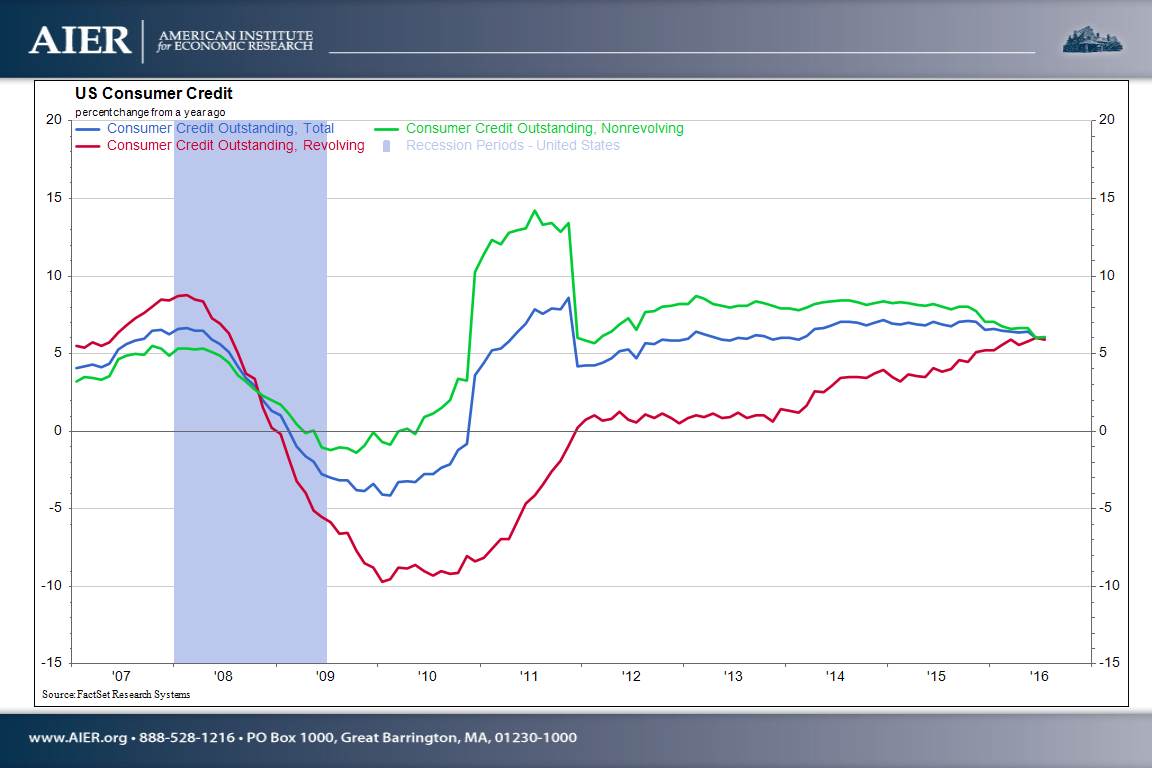Americans Are Increasing Their Credit Usage
Amid some conflicting economic signals, Americans are still showing an increasing willingness to expand their credit use. This may be a sign that despite flagging business investment and moderate growth in the jobs market, consumers remain confident in their personal financial situations.
Last week the Federal Reserve reported on consumer credit outstanding for the month of July. Consumer credit outstanding excluding mortgages rose by $212.6 billion to $3.66 trillion, a 5.8 percent annualized increase, up from a 4.8 percent pace in June.
The total is broken down into revolving debt, primarily credit cards, and nonrevolving debt, primarily auto loans and education loans.
The revolving debt outstanding rose by $33.3 billion to $969 billion, a 3.4 percent gain in July following an 11.5 percent jump in June. The nonrevolving portion grew by $179.2 billion, to $2.69 trillion, a 6.7 percent pace in July after a 2.4 percent annualized increase in June.
These monthly changes can be volatile. Looking at the data on a 12-month percent change basis helps smooth out the volatility. Over the past year, total consumer credit has risen at a 6.0 percent pace. Revolving credit has risen by 5.9 percent, while nonrevolving credit has gained 6.1 percent.
I find it interesting that while the pace of growth between the two major categories is now similar, they have come from very different places. Revolving credit had been gaining faster before the last recession, but then fell sharply during the recession and in the two-and-a-half years after the recession ended. Growth turned positive again in 2012, but remained at a very slow pace for 2012 and 2013. It wasn’t until 2014 that revolving debt really started to post faster growth. Meanwhile, nonrevolving debt made a faster recovery, but more recently has seen the pace of growth slow over the past year (Chart 1).
The Federal Reserve will be releasing a more comprehensive tally of debt across all sectors of the economy later this month. When the data is available, we’ll take a more detailed look at debt for the consumer as well as other sectors.
Click here to sign up for the Daily Economy weekly digest!






